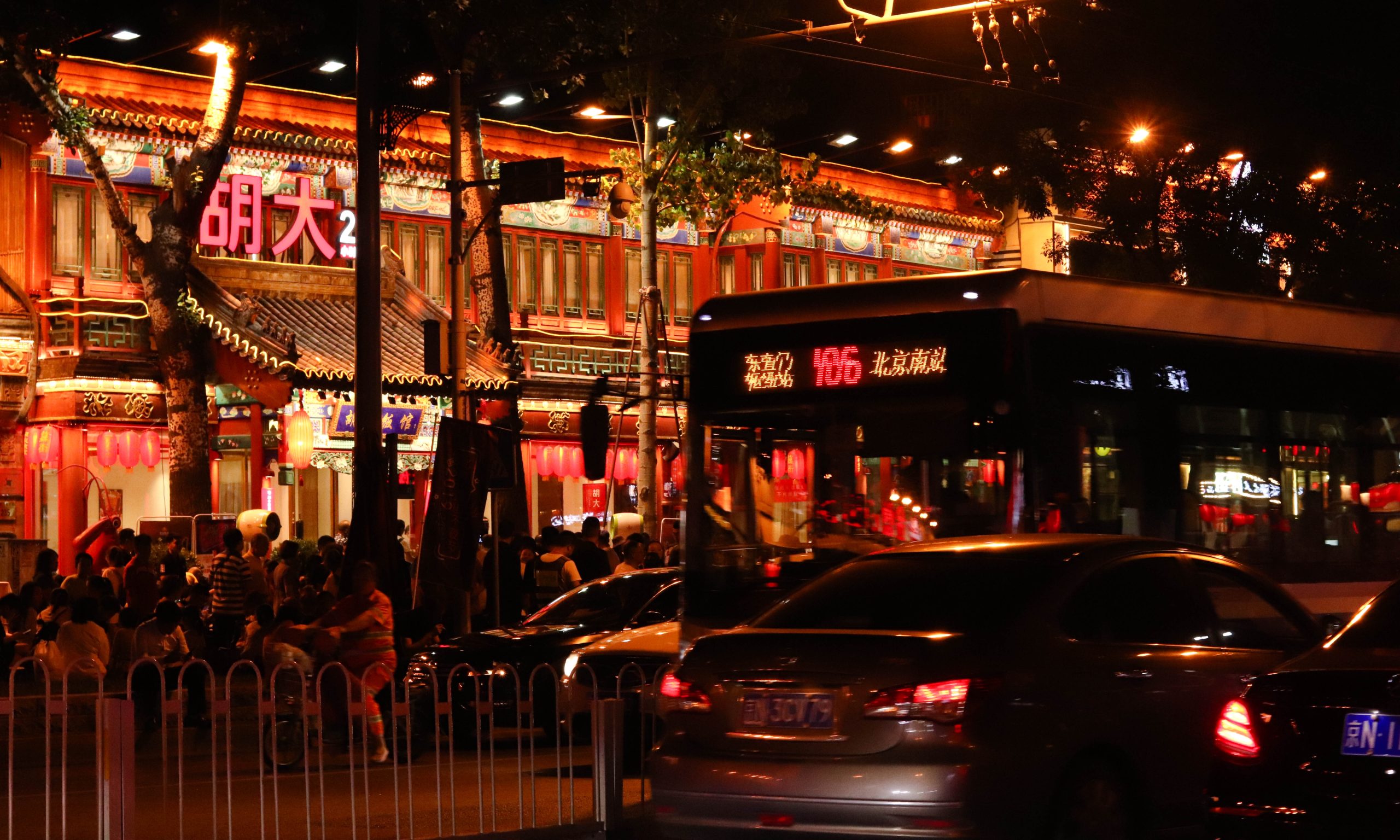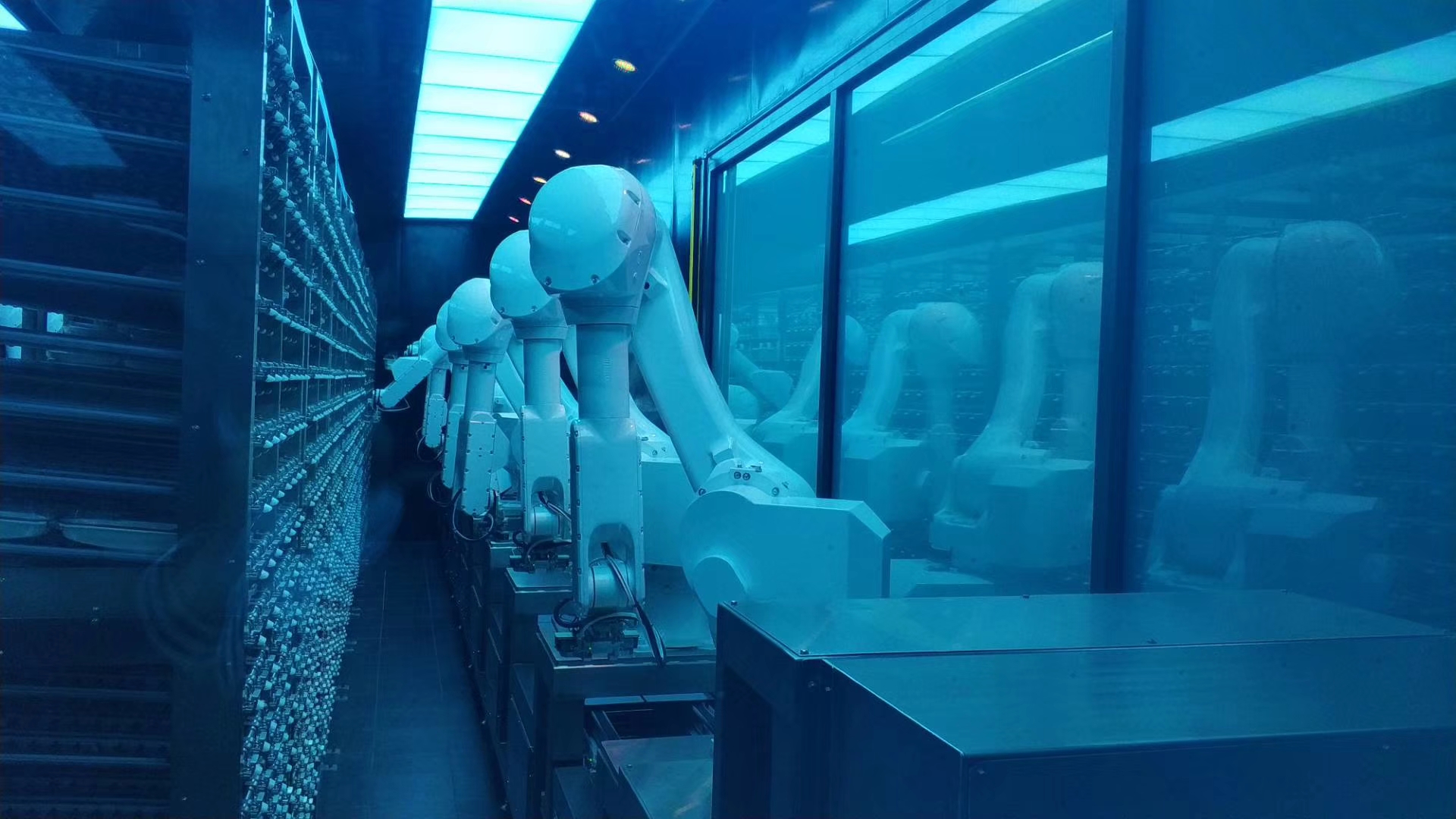More food and beverage consumption: let "eating out" no longer just "eat well"

After the introduction of "13 Articles of Night Economy", a number of characteristic catering blocks provide consumers with "Midnight Food Store" service. Beijing News reporter Han Shuwen photo
How big is the catering market in China? According to iiMedia Research, in 2018, China’s catering revenue was 4,271.6 billion yuan, exceeding 4 trillion yuan. It took only three years to break through 3 trillion to 4 trillion, and the time to break through trillion is getting shorter and shorter.
Under such a trend, the requirement of "eating well" has become an "old calendar" when going to a restaurant, and dining out has become a kind of social interaction. The content of "eating well" has also expanded from the narrow sense of "whether the dishes are good or not" to whether the raw materials and cooking methods are green and healthy, whether the design of the restaurant is outstanding, how comfortable it is to eat, etc., and even the judgment dimension has extended to whether it conforms to one’s own aesthetics, hobbies and "personal design"
Keyword 1: Theme Restaurant
Seeking comfort and emotional resonance
Nowadays, going to restaurants not only enjoys delicious food, but also includes experience, comfort and emotional resonance. This is also an important factor in the rise of theme restaurants and online celebrity restaurants in recent years.
Compared with general restaurants, themed restaurants tend to target specific consumer groups. For example, restaurants with sports and movies are more attractive to young people with related hobbies, while restaurants with music and nostalgia are more popular with post-70s, post-80s and elderly customers. Restaurants with flowers and pets are always visited by "girlfriends" who like to take photos.
These theme restaurants not only provide food that fits the theme, but also provide an atmosphere with a special culture as the theme, such as the restaurant with a nostalgic theme. The menu for ordering food is the examination paper of the student period, and the tableware for eating is enamel pots and aluminum lunch boxes … In addition, the restaurant has been decorated around this theme in the environment, so that customers can find a brand-new dining feeling in specific situational experiences. Even many operators of theme restaurants have changed themselves from pure "restaurant owners" to "players" looking for "lovers" through theme restaurants, thus bringing a fixed customer base and fans to theme restaurants. The emergence of theme catering not only caters to customers’ ever-changing catering consumption needs and provides customized, personalized and characteristic products and services, but also allows diners to not only "eat the taste of the tip of the tongue" here, but also feel the feeling of hitting the heart directly.
In addition to theme restaurants, "big IP" is gradually reflected in the catering industry. Restaurants that cross the border with big IP attract not only diners but also "fans". The IP effect of the Forbidden City makes the coffee and icehouse restaurant in the Forbidden City turret change from "online celebrity" to "Changhong"; Muji, which is characterized by minimalism and apathy, has also started Mujidiner; Little Yellow Duck and LINE FRIENDS, who have many fans, cross the border to restaurants and cafes to continue to circle powder; "Shuhei Aoyama Design" has also become an attractive IP, attracting many people who are interested in architectural design to make a pilgrimage to his skillful coffee … The popularity of "experience economy" makes providing customers with a "pleasant experience" a key practice in the service industry, which is also the key to the popularity of featured theme restaurants and IP restaurants.
Keyword 2: Midnight Food Store
Show the great energy of night economy
After work, I feel that "life is lit up" is the living state of many young people. Those who often stay up late need Midnight Food Store to fully heal their hearts and appetites. In July this year, Beijing issued the "13 Articles of Night Economy" to prosper the night economy, and finally no longer let Beijingers be envious of the "late-night poisoning" of southern friends. In fact, there is no shortage of landmark night economic areas in Beijing. Workers’ sports, Sanlitun, Houhai and Guijie have propped up half of Beijing’s night economy in the past. In Beijing’s "13 Articles on Night Economy", it is specifically mentioned that 10 catering blocks with Midnight Food Store characteristics will be launched, and the Beijing Municipal Bureau of Commerce has also provided "real money and silver" to provide financial support for "Midnight Food Store".
In Beijing, the old-fashioned "Midnight Food Store" gathering place is Guijie Street, which has touched the late-night economy since the 1980s and 1990s, and has become a place where senior "night owls" in Beijing enjoy nightlife. This year’s "Guijie No Night Festival" made the "No Night" genuine. At that time, almost all the restaurants in the street were open 24 hours, and people were still busy peeling "sesame seeds" and rinsing hot pot at two or three in the morning, which reflected the great energy of Beijing’s night economy.
Compared with Guijie, Midnight Food Store, located in Heshenghui Shopping Center near Dawang Road, Chaoyang District, has gathered more than 200 specialty catering merchants and quickly became the punching place for "online celebrity". In addition to all kinds of delicious food, there are all kinds of dancing machines, shooting machines, late-night markets and other places to play and visit. Compared with the big restaurants in Guijie Street, many of them are popular "lightweight foods": bronze gongs, frozen yogurt, roasted cold noodles and milk tea … This way of eating while walking, playing and eating is also a state that young people like. Although the closing time of Heshenghui "Midnight Food Store" has been advanced from 24: 00 to 22: 00 on October 12, it is enough to show that "there is no nightlife in Beijing with a population of more than 20 million" has long been a thing of the past.

The robot arm acts as a restaurant attendant. Beijing News reporter Zhang Xiaorong photo
Keyword three: intelligent catering
Leading the development of the industry with science and technology
In Beijing’s "unmanned restaurant" in Haidilao, the busy waiters were instantly replaced by intelligent robots. Here, there is no vegetable washer in the back kitchen, and the processing of ingredients is unified to the outsourcing supplier and the central kitchen, and then the whole cold chain goes directly to the store; After the customer orders food through iPad, the data goes directly to the kitchen, and the robot arm acts as a food coordinator, taking the food off the shelf and putting it on the conveyor belt. The delivery man has also become a robot on standby, which can serve the guests accurately. In addition, the wine area of the smart restaurant is completely "self-help", and even the humanized equipotential area of the Haidilao signboard has been upgraded to a cinema-like giant screen projection. As long as customers scan the code with their mobile phones, they can enter the game interface with other equipotential people and start the same store PK.
In April this year, Meituan released China Catering Report 2019. In addition to the words "snacks", "fast food" and "take-away" that often appeared in the report in the past, the Report also put forward the concept of "smart catering" for the first time. Jiang Junxian, president of China Cuisine Association, said that in the past year, catering consumption has become an important force in the domestic consumer market. The catering industry has moved from the traditional catering service industry in the inherent thinking to the modern catering service industry, and has entered a new era led by technology from simple manual labor.
The report also shows that among catering consumers, "post-90s generation" accounts for 51.4%, far exceeding the proportion of "post-90s generation" in the total population of China. In this regard, industry experts believe that a new generation of young consumers grew up in the Internet age, and they have clear Internet usage habits, which will also force catering operators to actively embrace digital changes, from procurement to transportation to catering sales. The quality and intelligence of the catering industry are constantly happening.
◆ Counting consumption
In 2018, the catering market in China has reached 4.2 trillion, surpassing the scale of "4 trillion" for the first time.
Among the catering consumers in China, the generation of 90s (post-90s+post-90s) accounts for 51.4%, far exceeding the proportion of the generation of 90s in the total population. Women are still the main consumer of food and beverage, accounting for 59.7%; But at the same time, the status of male catering consumption has become increasingly prominent, and "other consumption" has begun to rise. Among the high-end catering consumer groups, men account for 52.1%.
In 2018, people’s catering activities took 1 hour and 44 minutes, an increase of 4 minutes over 2008. Where is this four-minute extension? Because of the good service, good products and good experience, customers are willing to stay in the restaurant for more time. This figure explains that consumers go to restaurants to consume not only products, but also the sense of consumption experience.
Source: US Mission Review "China Catering Report 2019"
Beijing News reporter Wang Ping
Editor Peng Yali proofreads Xue Jingning.